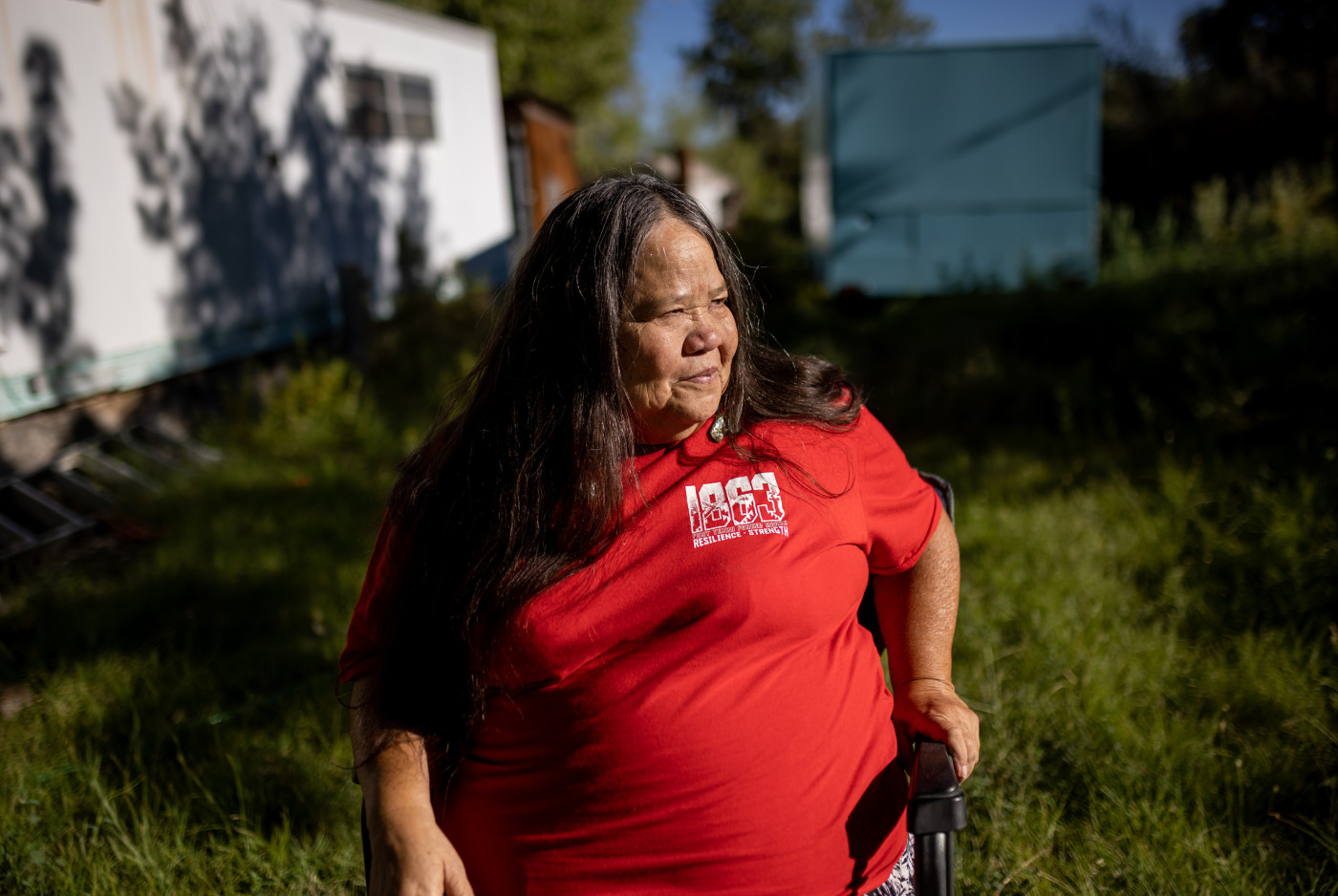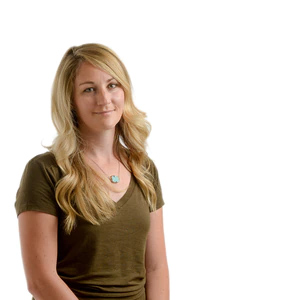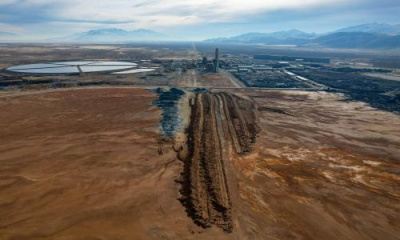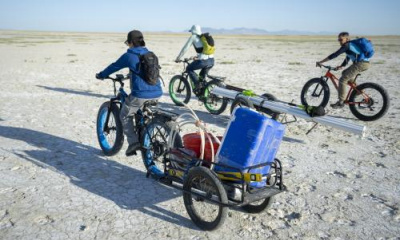Lone Pine, Calif. • The area around Owens Lake holds a certain kind of magnetism.
There’s the spectacular Sierra Nevada to the west, crowned by Mount Whitney, the tallest peak in the continental United States. There’s the charming town of Lone Pine, which looks like a 1950s postcard stuck in time, where everyone urges visitors to try Seasons, a rustic little steakhouse that’s delightfully worth the hype. And there’s the stirring desert landscape. Owens Lake and its surroundings have served as the backdrop for hundreds of films, from John Wayne and Roy Rogers Westerns to sci-fi hits like “Tremors” and “Star Trek.”
But longtime residents recall spells when things weren’t always pleasant. They remember when the dry Owens Lake became a source of dangerous dust so thick sometimes it would blot out the sun.
“It's been dry my whole life,” said Kathy Jefferson Bancroft, the tribal historic preservation officer for the Lone Pine Paiute-Shoshone Reservation, whose ancestors have lived in the area for thousands of years. “When I was young, yeah, it would get dusty once in a while, but the ’70s was when we got the really bad dust storms.”
It’s a fate that appears all but certain to befall residents of the Wasatch Front as their own, much larger, Great Salt Lake withers away. And after what happened to the air quality around Owens Lake, it has many public health and environmental advocates alarmed.
Owens Lake had all its water siphoned by the 1920s, after Los Angeles diverted tributary streams. It took a few decades for the lakebed to become dust, its parched sediment satiated by a few cycles of wet weather.
When the pollution did begin to blow, however, Owens Lake earned a notorious reputation. It became the largest human-caused source of dangerous PM10 emissions in the nation.
It hit the tribal communities living on Bancroft’s reservation particularly hard.
“That’s why we all have breathing problems,” said Bancroft, who was diagnosed with asthma later in life.
She recalled dust storms so severe, they reminded her of smoke from a bad wildfire.
“We’re in this narrow, deep valley,” Bancroft said, “so it takes the air a long time to clear up around here. When something like that happens, we’re stuck breathing that air for a long time.”
‘You taste salt in your throat’
Equipped with a biology degree and a love for nature, Michael Prather moved to Lone Pine in 1980 in search of wide-open spaces. He and his equally educated wife, Nancy, took jobs as teachers.
Health advisories and canceled recesses became familiar parts of their yearly routine. They said several students used inhalers.
“It goes up very quickly,” Prather said of the storms. “The valley is filled brown from rim to rim. … You taste salt in your throat, in your mouth and in your nose. People with breathing problems start showing up at our local little ER room in our small little hospital.”

Mike Prather, 75, who has lived near Owens Lake since 1980, sits for a photograph in his home in Alabama Hills, an unincorporated area just outside Lone Pine, California, on Thursday, Aug. 11, 2022. Spenser Heaps, Deseret News.
There hasn’t been a comprehensive study that documented the fallout of Owens Lake dust on surrounding communities. But in the late 1980s, the Los Angeles Times reported bloody noses, rising cases of disease like emphysema and people who required supplemental oxygen after years of breathing the air around Owens Lake.
The public health consequences of dust pollution are well-understood. Fine particulate matter can embed deep in the lungs, move into the bloodstream, and take a toll on the heart and brain.
Dan Dickman has lived in nearby Keeler since the 1970s. It’s an old mining town turned bohemian artist community, right on the former lake’s shore. It bore the full brunt of the toxic plumes, regardless of which way the wind blew.
“The first years, it was whiteout storms,” he recalled. “The only way you’d get a sense of direction is you’d feel the light of the sun.”
‘Like being in another world’
So, for all the danger and nuisance caused by the blowing dust, why did the people living near Owens Lake stick around?
Well, for one, the region is gorgeous. When Los Angeles came to town a century ago, buying up all the farms and diverting away their water rights, it ended up preserving a lot of open space and the valley’s rural character.
“Without them taking the water, we’d have an environment like Fresno, California, where it’d be all agriculture and smog in the air,” said Dickman, who grew up in Southern California’s urban Inland Empire.
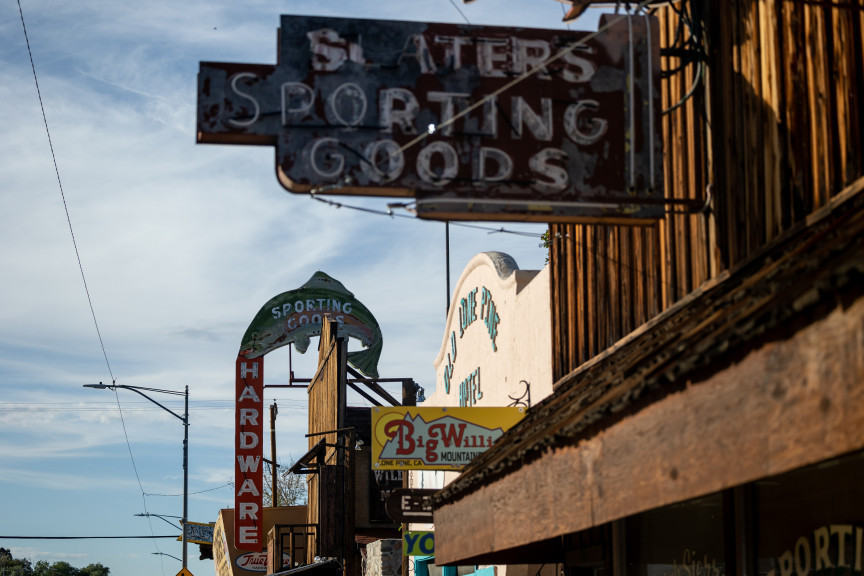
Businesses line Main Street in Lone Pine, California, on Thursday, Aug. 11, 2022. Spenser Heaps, Deseret News.
And that agriculture may well have dried up Owens Lake anyway. At the Great Salt Lake, farming accounts for 63% of the diverted water leading to its decline, according to a Utah State University analysis. Water consumption along with human-caused climate change are drying out terminal lakes around the world.
But even a desiccated salt pan of a lake, Dickman said, has its appeal.
“There were these windstorms that were godawful, but we had the whole dry lake to ourselves,” he said. “You could walk out there, be out there, and it was like being in another world.”
Although Owens Lake pollution would clog the skies and obscure the mountains from view, Prather noted, it wasn’t by any means a daily occurrence.
“I figured the dust storms were something that [happened] several times a year,” he said. “If you stayed inside and took reasonable precautions, hopefully you’d be OK.”
The depressing bouts of pollution were worth enduring to have a seemingly endless outdoor playground in his backyard.
A lot of Utahns can probably relate.
Bancroft did manage to leave a few times, moving to Salt Lake City for high school, then to Durango, Colo., for college and Bozeman, Mont., for graduate school.
She kept returning, though, to Owens Lake, her homeland, and emerged as one of its most revered protectors.
Bancroft has labored to ensure the area is remembered as more than just a dust bowl,goading California to recognize Owens Lake as a historic district with deep cultural significance.
“We've always been here,” Bancroft said. “We know this place. We take care of it.”
What's your response to At Water's Edge?
Does this reporting project make you feel hopeful? Concerned? Inspired? Surprised?
Selected responses will be used on social media, on our website or in our newsletter.

